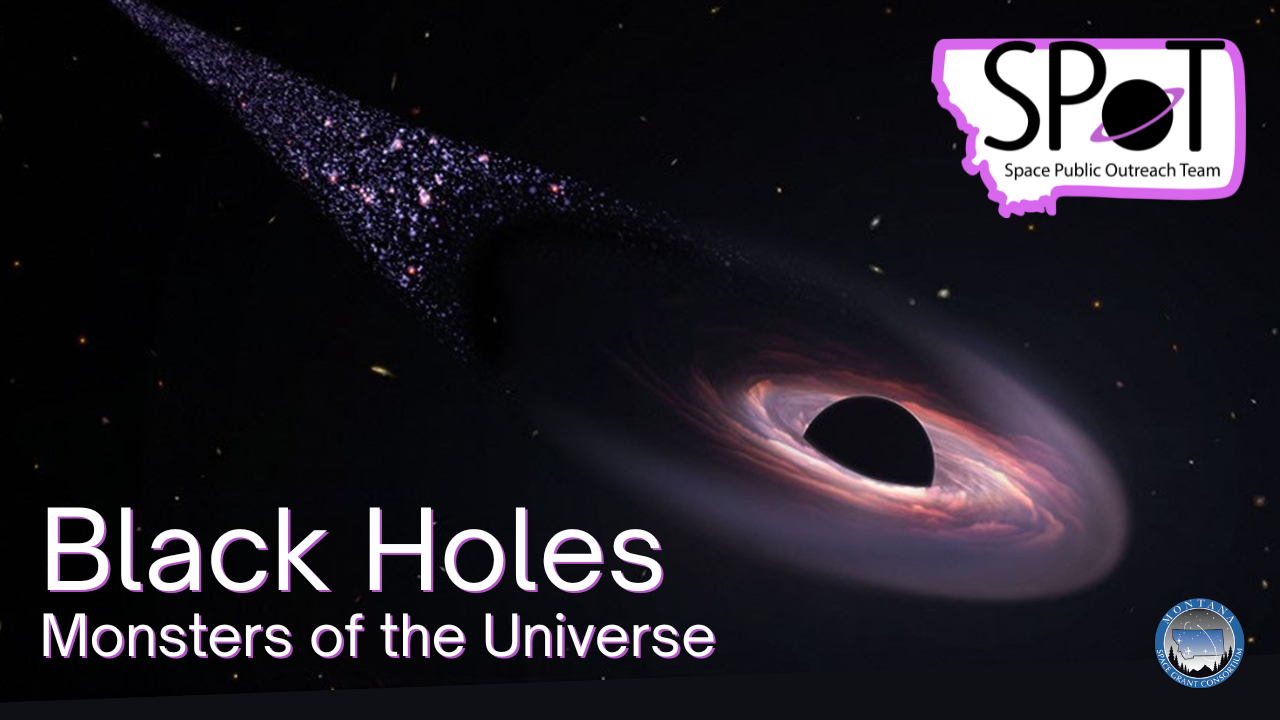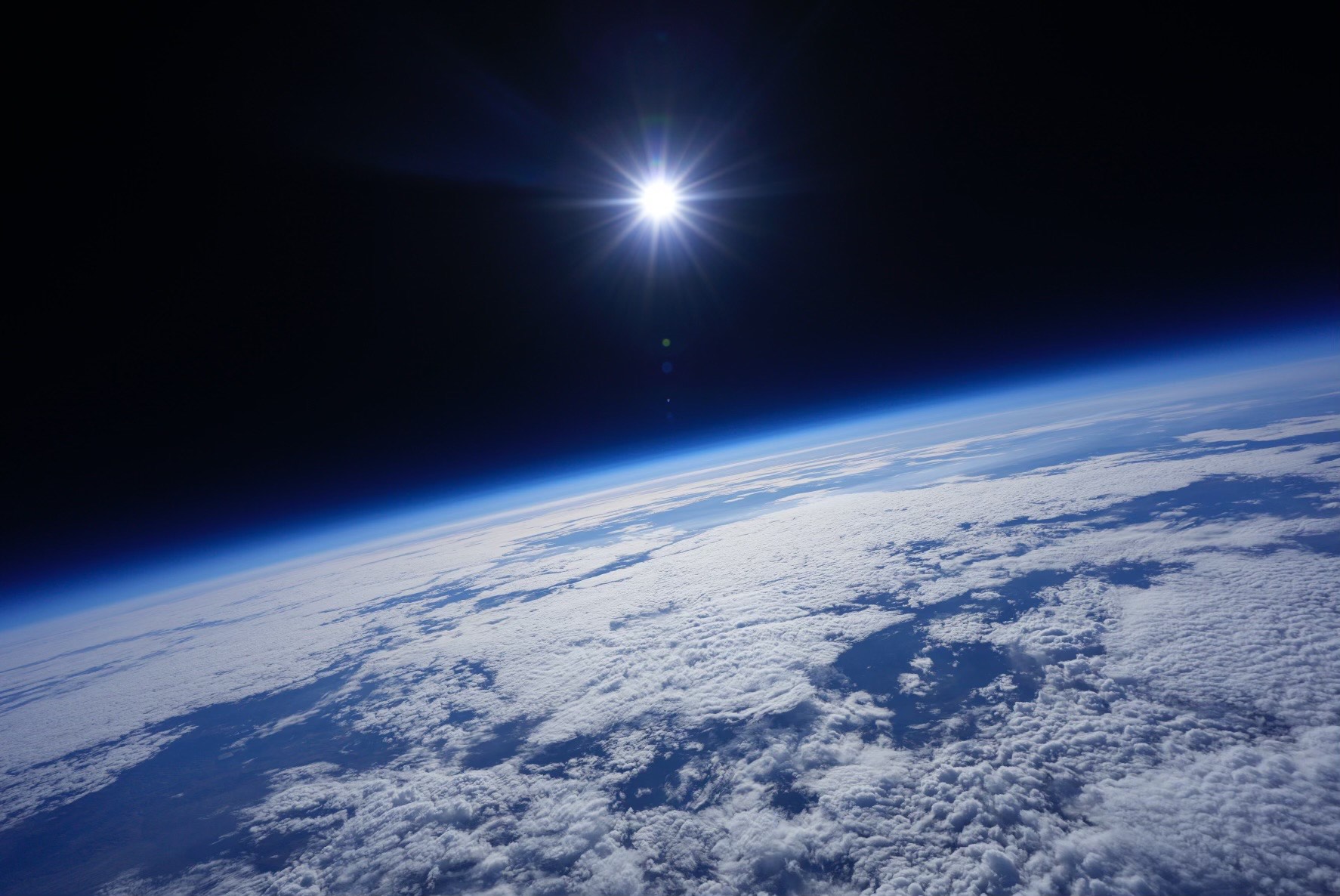SPOT 2024 - 2025 Presentation

About the Presentation
This exciting interactive presentation engages students in learning about black holes: what they're like, how they form, and how scientists are studying them from right here in Montana.
Request a presentation for your classroom today!

The Following Presentations Are No Longer Available
Previous Presentation Themes
In the 2023-2024 school year, we were fortunate enough to have 2 solar eclipses occur in the continental United States -- one annular eclipse and one total eclipse. In this presentation, we explain what solar eclipses are, how to tell the difference between the different types of solar eclipses (e.g., annular vs. total) and how best to view an eclipse without hurting yourself.
Astronomers love the Sun! Not just because it provides all the energy necessary for life to be possible on Earth (although that is pretty nice), but because it is the closest star to Earth, making it easy to study (at least, compared more distant stars). In this presentation, we explore everything scientists have learned about the Sun, from how it produces its energy to the features we see on its surface. We also meet some scientists right here in Montana that are currently studying the Sun, helping to expand our knowledge of our favorite star.
Only 5% of the universe is made of of material we understand - normal matter. The other 95% is made up of dark matter and dark energy, which we know very little about. We are learning more, however, through the new tool of gravitational wave analysis. Gravitational waves can tell us about colliding black holes, colliding galaxies, and much more. Scientists right here in Montana are working on gravitational waves! This presentation gives an introduction to the universe as we can observe it on the "light side" and how we are learning to observe the mysterious "dark side".
It is estimated that 4 out of 5 individuals living in the continental US cannot see the milky way. Dark skies are our personal connection with the cosmos and Montana gives us the unique opportunity to explore our cosmos, both from observing our skies on a dark night or academically at our colleges and universities. Discover some of the marvels that we can see in our skies, where they are, what they are, and how we have learned more about them. Now join us as we aid you in your exploration of our place in the universe.
Juno launched upon an Atlas V rocket on August 5, 2011 for its journey to our nearest gas giant, Jupiter. On July 4, 2016, after a nearly 5 year journey and becoming the fastest human-made object (accelerating to a remarkable 25 miles per second) during the Earth slingshot maneuver towards Jupiter, Juno finally arrived to it's stunning destination. For over a year Juno has beamed back a wealth of new information and images aiding in not only our understanding of the origin and evolution of the planet Jupiter, but of our solar system as well. Come join us as we explore Jupiter's mysteries being unveiled by NASA's Juno mission
What are total solar eclipses? Why are they so rare? Why was the 2017 total solar eclipse so special? Revisit the total solar eclipse from August 21st, 2017 from new perspectives as the daylight slipped into minutes of darkness along a narrow strip of the continental US during the Great American Eclipse.
This show looks a bit at the history of finding Pluto and it's "demotion" of planetary status. Learn the story of Pluto and how that led to the amazing New Horizon NASA mission .
This presentation looks at tools we use and hope to use to explore the universe around us. Begin learning about how light has been used to explore the universe. Then learn what gravity is at a fundamental level and how scientists plan to use gravity to divulge new secrets of the universe.
This presentation is based on the night sky and learning where some extraordinary objects are in our night sky and what they are. Explore objects in the heart of the milky way and summer and winter constellations. This presentation is recommended for grades 2-12.
This will be an extra show we will have as a backup. This presentation "embarks" on a NASA learning mission to investigate what it takes to look for life in the universe starting with our solar system. Begin with interview questions, then proceed to mission training and finish with a space exploration simulation with the students. This presentation is recommended for grades K-5.
